Panasonic Leica DG Nocticron 42.5 mm f/1.2 Asph. P.O.I.S.
3. Build quality and image stabilization
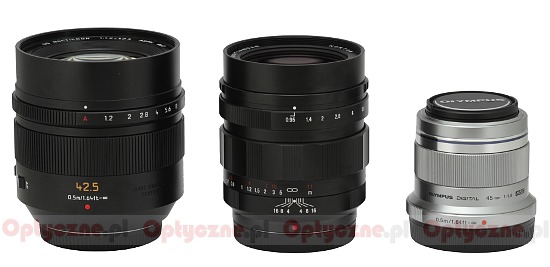 |
It can be clearly noticed that the presence of the autofocus motor and the optical stabilization influences the dimensions. What’s interesting the Fujinon XF 56 mm f/1.2 R, featuring the same aperture fastness as the Panasonic, with the same field of view and designed for a bigger sensor, still manages to be a bit smaller and physically lighter; still it comes without any optical stabilization.
Please Support UsIf you enjoy our reviews and articles, and you want us to continue our work please, support our website by donating through PayPal. The funds are going to be used for paying our editorial team, renting servers, and equipping our testing studio; only that way we will be able to continue providing you interesting content for free. |
- - - - - - - - - - - - - - - - - - - - - - - - - - - - - - - - - - - - - - - - - - - - - - - -
The tested lens starts with a metal bayonet mount with contacts. Inside the mount you can find a rear element, hidden by about half a centimeter inside. It is immobile, with a diameter of 22 mm.
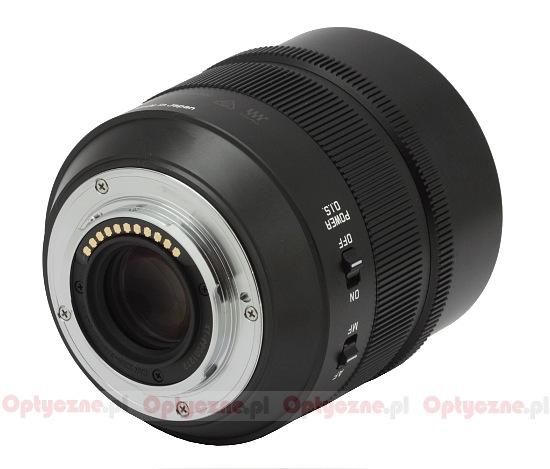 |
A metal ring, which diameter first increases and then stops at 7 cm, is the first part of the proper body of the lens. There is a big inscription on it which reads “42.5” and below a distance scale of the instrument. On the right you have other inscriptions “Nano Surface Coating” and “LUMIX” and on the left two switches: an AF/MF one and the other to control the optical stabilization (POWER O.I.S. ON/OFF). At the back there is a serial number and the information that the lens was produced in Japan.
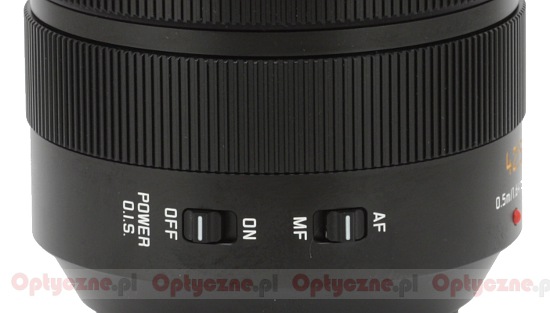 |
A manual focus ring is the next part of the lens – it is 17 mm wide and covered with fine ribs. Its work is based on servomechanisms so it can be used only after connecting the lens to a camera. The ring turns smoothly and is well-damped.
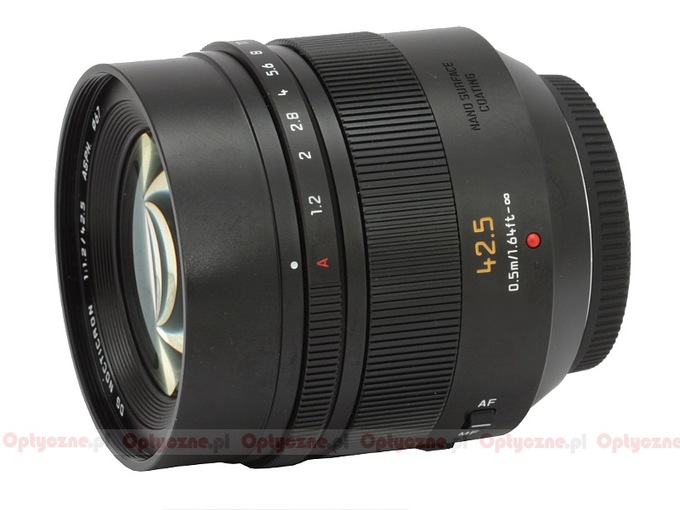 |
The next part is a nice surprise: there is a thin manual aperture ring, (just 6 mm wide). Contrary to the Pana-Leicas designed for the 4/3 reflex cameras, the Pana-Leicas 1.4/25 mm and 2.8/45 Macro didn’t feature it. It is a very nice blast from the past especially that the ring works very well: it is smooth and well-damped, allowing you to set the aperture every 1/3 EV step. Further on, there is just a smooth, immobile part of the casing, 21 mm wide.
The front element of the lens is 45 mm in diameter, surrounded by an inscription stating the name and the parameters of the lens and a non-rotating filter thread, 67 mm in diameter.
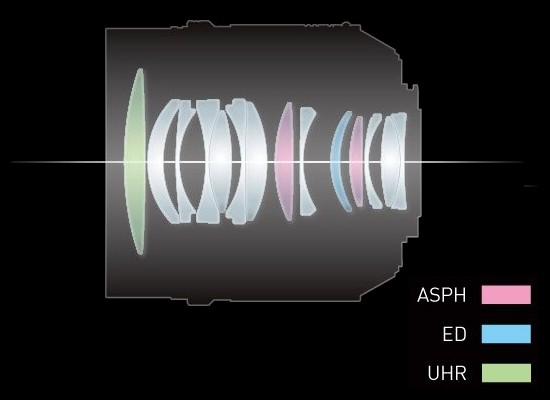 |
When it comes to the optical construction you deal here with 14 elements positioned in 11 groups. Two elements are aspherical, one was made of extra low dispersion ED glass and one – of UHR glass with low refractive index. Additionally the lens is Nano Surface coated and has a circular aperture with nine diaphragm blades which can be closed down to a value of f/16.
Buyers get both caps, a hood (and it is interesting that it is a slide-on type, wedged with a screw, so you don’t have to screw it on a special thread) and a soft pouch.
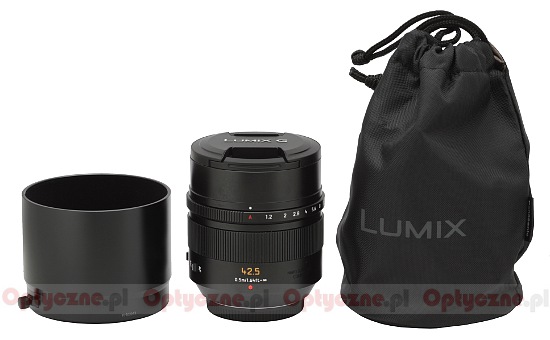 |
Image stabilization
As the lens is equipped with an image stabilization mechanism we decided to check its efficiency as well. In order to do so we took several dozen photos at every exposition time, ranging from 1/100 to 1/2 of a second, with the image stabilization switched on and off. For every exposure time we determined a percentage of blurred photos, presenting is as a time function graph expressed in EV (the 0 EV point being the equivalent of 1/80 of a second).
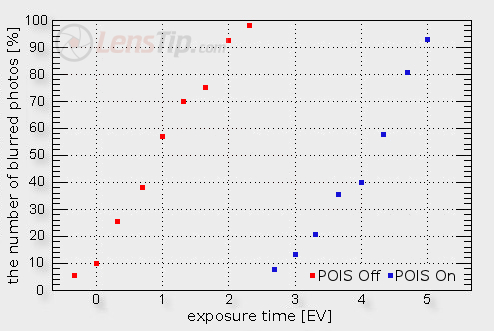
The maximum distance between both curves is a good indicator of the stabilization efficiency. In this case it amounts to about 3.5 EV which is a good result.






